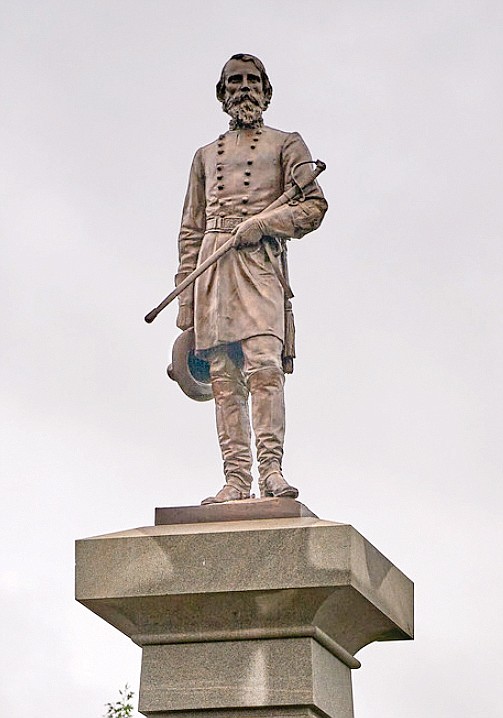Judge rules City can remove A.P. Hill statue
Jeremy M. Lazarus | 10/27/2022, 6 p.m.
The last statue of a slavery-defending Confederate still standing in Richmond can be removed after 130 years.
That’s the ruling from Richmond Circuit Court Judge D. Eugene Cheek Sr.
In an eight-page decision released Tuesday, Judge Cheek found that the statue of Confederate Gen. A.P. Hill belongs to the City of Richmond and that the city is free to dispose of as it deems best, which is to transfer ownership to the Richmond-based Black History Museum and Cultural Center of Virginia.
The museum already has been given the other statues that were previously removed.
“We’re gratified by Judge Cheek’s ruling,” Mayor Levar M. Stoney said after receiving a copy, calling it the “last stand of the ‘Lost Cause’” in the city.
The ruling could still be appealed, the mayor stated, which could delay what he sees as the inevitable: The transfer to a Culpeper cemetery of the remains of Gen. Hill, which have been buried under the statue and the removal of the figure that has stood over him since 1892 at what is now a traffic circle at the intersection of Hermitage Road and Laburnum Avenue.
“We look forward to a successful conclusion of the legal process,” the mayor said, which he added would ultimately “improve traffic safety at the intersection.”
Judge Cheek’s ruling rejected the position of distant relatives of Gen. Hill, who claimed that the statue and remains constituted a cemetery and they should be granted the right to decide what happens to statue.
They argued that the statue should be seen as a grave marker and claimed that the city should set up the statue at a place of their choosing rather than sending it to the Black History Museum.
Judge Cheek first ruled that a traffic circle in a busy intersection does not meet the definition of a cemetery as laid out in the City Code or state law as a place exclusively used for the burial of the dead.
But even if it were a cemetery, Judge Cheek tellingly noted that the descendants cannot prove ownership. “The A.P. Hill statue cannot belong to A.P. Hill’s descendants because it never belonged to A.P. Hill,” who was killed at the end of the Civil War or more than 35 years before the statue was created.
The statue along with Gen. Hill’s remains were originally put on a piece of Henrico County property owned by pioneering cigarette manufacturer Lewis Ginter, the judge noted, and the “city has owned and maintained” the statue since annexing the area in 1914.
The city has followed the legal procedure for removal, the judge noted, and wrote that as the city owns it, the court has no authority “to recommend, condemn or suggest the place in which the monument is housed.”
The city is prepared to act and has hired Team Henry, the same company that removed the other city-owned statues, as soon as the legal case is completely over.







